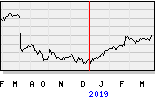
ASM International N.V. (NASDAQ: ASMI and Euronext Amsterdam: ASM, "ASM") and IMEC announce that they have agreed to enter into a three year strategic partnership in the area of Back-end-of-Line (BEOL) Interconnect Technology, commencing in 2006. In this strategic partnership, IMEC and ASM will develop novel copper/low-k technologies for use in interconnect on chips in the nanotechnology era, having features sized 45 nm or less and on 300mm wafers. Earlier, ASM and IMEC announced a strategic partnership in Front-end-of-Line (FEOL) Transistor Technology (October 11, 2004).
To help facilitate the technology development, ASM will deliver its most advanced 300mm Back-end-of-Line semiconductor wafer processing equipment and services to IMEC, including Eagle® systems for low-k insulator deposition, and an electro-chemical mechanical deposition and polishing (ECMD and ECMP) LuminaCu™ system for planar copper plating. The equipment is expected to be delivered in 4th quarter 2005 and 1st quarter 2006. The strategic partnership agreement includes ASM’s participation for three years in IMEC’s sub-45 nm copper/low-k development programs.
Increasingly the calculation speed and the dynamic power consumption of computer chips is determined by the resistance of the nanometer sized copper wires, and the quality of the insulator in which these wires are embedded. The strategic partnership aims to investigate solutions that can further decrease the power consumption, and increase the calculation speed of computer chips.
"We extend our successful FEOL strategic partnership with ASM with this equally important partnership in BEOL" says Luc Van den hove, Vice President Silicon Process and Device Technology. "This partnership will expand our world-class capabilities to implement state of the art low-k technology in our pilot line, and simultaneously research advanced ultra-low-k insulators and new plating technology with our core partners", he continued.
"IMEC has established itself as a leading research institute in the BEOL area" says Arthur del Prado President and CEO of ASM. "IMEC’s capabilities to characterize our most advanced interconnect processes and materials will help us to stay ahead of customer demands", he added.
ASM has had a presence on the IMEC premises since 1994, when it moved its European demonstration and process research laboratories to Leuven. ASM Belgium was incorporated as a research center in 2000. ASM Belgium, IMEC researchers and IMEC’s partner researchers will jointly realize the required processing capability for the sub-45 nm devices.
ASM’s work with IMEC is part of IMEC’s nanoelectronics research platform, which brings together leading chipmakers worldwide to tackle the challenges for the sub-45nm node.
Ander nieuws
ASML Holding NV (ASML) today announced a new lithography system with the highest numerical aperture (NA)** – 1.2 – in the semiconductor industry. The ASML TWINSCAN™ XT:1700i system is a 193 nm immersion scanner capable of volume chip production at the 45 nm node. The new system has a NA that jumped from 0.93 to 1.2, skipping the perceived, pre-immersion barrier of 1.0. The first shipment to a customer, a leading semiconductor manufacturer ordering its second ASML immersion system, will take place in Q1 2006.
The XT:1700i allows chip makers to improve resolution by 30 percent, the largest improvement in decades. Better resolution means more chips per wafer or more functionality per chip, thus increasing the value of each wafer. Additionally, the XT:1700i has the highest throughput currently available, 122 wafers per hour, for the 45 nm node.
"The XT:1700i is a milestone for the semiconductor industry. The continuation of Moore’s Law depended on either adapting existing or introducing new technology. ASML was able to enhance its fourth-generation immersion systems with a NA that is unchallenged in the market," said Martin van den Brink, executive vice president, marketing and technology, ASML.
Additional customer benefits found in the XT:1700i include:
A new catadioptric lens design which combines refractive components with mirrors to create a hyper NA lens that is cost effective to manufacture and a consistent size with other ASML systems. Co-designed with ASML’s optics partner, Carl Zeiss SMT AG, the new lens will also extend to larger NAs in future products;
A maximum field size of 26 by 33 mm, the largest in the industry;
A polarized illumination system for improved contrast and exposure latitude at full throughput. With an NA of 1.2, polarization enhances resolution by 5 nm, from 50 to 45 nm;
A fourth-generation, dual-stage immersion tool. All previous generation tools are being used by real customers to produce real chips.
